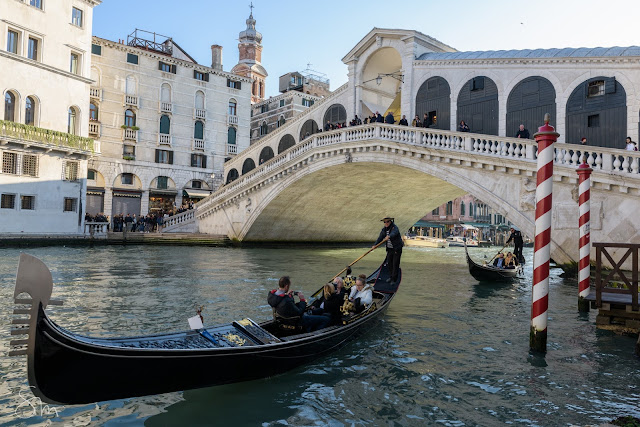We used the last chance to drop by this year's Venice Biennale before they close their doors this week.
Greeted by Carole Feuerman in Giardina della Marinaressa, the life-sized resin ladies seem ready to jump into the laguna and swim south.
The Russian pavillon with a fitting work "Blocked Content" by Recycle Group on virtual identities, hacking and cyberplay.
Great Britain sent Phyllida Barlow "folly" with an installation reminding me of a (rather unstable) Veronese balcony -
The pavillon of the United States of America represented by Mark Bradford: The State of the Union's support for art is reflected by the neglect outside? It seems with purpose that we enter the building from the side door and the neo-classical columns stand forgotten. The huge colourful belly hanging from the ceiling in the first room presses on everybody's stomach and nerves. It reminds me of the colossal fat lump found blocking the London sewer system which required weeks for removal.
The German Pavillon installed by Anne Imhof and her team, which won the prestigious Golden Lion award, drew long lines. One of the rare performances of "Faust" was happening. Full of dark clicheés with doberman guard dogs behind fences around the imposing pavillion, we thought it blunt and humourlessly oppressive.
After a long day of walking through Biennale, it is good to have a perfect resting point with excellent food:
the chef of Restaurant "Riviera" close to the Zattere vaporetto watertaxi station prepared something deliciously fitting for Biennale:
cabillaud on a red cabbage-egg concoction - presented on a corresponding Murano glass plate ... Hmmmmh :)!
We will be back in two years' time!
Greeted by Carole Feuerman in Giardina della Marinaressa, the life-sized resin ladies seem ready to jump into the laguna and swim south.
The Russian pavillon with a fitting work "Blocked Content" by Recycle Group on virtual identities, hacking and cyberplay.
Czechoslowakia: Jana Zelibska - Swan Lagoon
The pavillon of the United States of America represented by Mark Bradford: The State of the Union's support for art is reflected by the neglect outside? It seems with purpose that we enter the building from the side door and the neo-classical columns stand forgotten. The huge colourful belly hanging from the ceiling in the first room presses on everybody's stomach and nerves. It reminds me of the colossal fat lump found blocking the London sewer system which required weeks for removal.
The German Pavillon installed by Anne Imhof and her team, which won the prestigious Golden Lion award, drew long lines. One of the rare performances of "Faust" was happening. Full of dark clicheés with doberman guard dogs behind fences around the imposing pavillion, we thought it blunt and humourlessly oppressive.
The dogs did not mind the sober atmosphere. They greeted inquisitive visitors with wagging tails.
The funniest exhibit was predictably in the Austrian pavillon created with an interactive caravan by the ever reliable Erwin Wurm:
The Arsenale area , formerly part of the military zone next door, is a sight in itself with its huge empty spaces ideal for large installations:
More impressions from the Arsenale area :
visitors behind nets
Zilia Sanchez - Amazons
Roberto Cuoghi - Imitazione di Cristo
Alicja Kwade, who also had an installation on Bad Homburg's "Blickachsen" this year
After a long day of walking through Biennale, it is good to have a perfect resting point with excellent food:
the chef of Restaurant "Riviera" close to the Zattere vaporetto watertaxi station prepared something deliciously fitting for Biennale:
cabillaud on a red cabbage-egg concoction - presented on a corresponding Murano glass plate ... Hmmmmh :)!
We will be back in two years' time!

































































